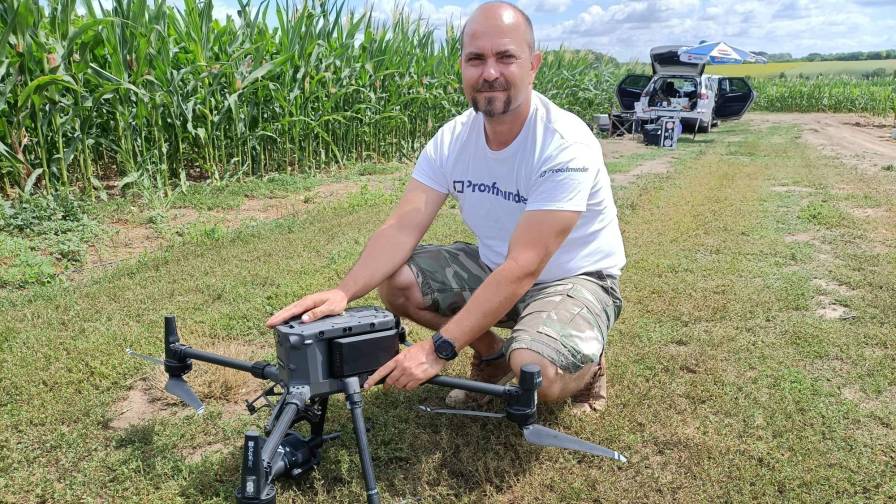How Can Digital Agriculture Address the Top Challenges of the Future?
Every year it is always interesting to reflect on the past and look for lessons learned in the last year. Agriculture is facing many challenges as we arrive in the New Year, and lessons can be learned or thought into as we start another season in ag. 2018 brought many exciting opportunities and more discussion around technology, data, and global food connectivity. For 2019, more advancements, technology adoptions, and adventures will take place, and many around the largest challenges agriculture faces.
How can digital agriculture provide the answers and insight to some of the most difficult challenges for 2019? As we reflect on 2018 and look forward to a full and changing 2019, five challenges with tough questions of uncertainty can be developed through reviewing the past performance and looking ahead to future potential for digital agriculture.
Prices
It’s no secret that 2018 brought struggles with commodity prices for many crops. With trade policies changing, tariffs shuffling, and supply and demand values in flux; 2018 showed promise to the future of digital agriculture with both traceability, efficiency, and security. In one of the most early uses for blockchain technology in agriculture back in January, Louis Dreyfus with Dutch and French banks utilized digital technology to sell U.S. soybeans to China with blockchain.
As traceability continues with data collection through advanced collection of data and IoT on the farm with more connected technology, opportunities in the future will be present to capitalize these “smart contracts” through niche market opportunities for those wanting to find a new opportunity outside commodity crops alone. Consumers becoming more aware of their food sources with disposable incomes now look towards their preferences in production of the food they consume, instead of buying whatever is available on the shelf.
MORE BY SCOTT SPECK
As prices continue to rise or stay stagnant for other farm necessities, such as inputs and equipment, digital agriculture is enhancing decision making for farmers by providing analytics and benchmarking for decisions on smaller and more precise measurements to bring real insight to questions like “Which one of my operators is more efficient when spraying?” or “What was the right amount and timing to put on that sidedress Nitrogen?” With high costs, it is critical that digital agriculture is used to provide ROI from the data and technology for farmers to combat low crop price scenarios when upfront costs can be high and making the most out of every budgeted dollar in 2019.
Labor
A continuous issue in agriculture, labor continues through 2018 and 2019 to be an issue to fill roles in agriculture, especially in rural areas. These roles aren’t just on the farm or ranch, but also in the industry looking for skilled workers in technology or sales. Predominantly, rural areas are facing challenges into the future with keeping a skilled workforce that is needing to do more with less, and must be efficient at doing so. Technology in digital agriculture has already shown promise into the labor challenge through opportunities in automation, efficiency, and outsourcing for other technology roles. Automation has large shoes to fill, but with each year the promise becomes closer to a reality, with many great examples already in use in 2018. With low unemployment rates in many areas, coupled with the population push to urban areas, agriculture must look towards digital agriculture to move into the next step of efficiency on the farm before the issue becomes more costly than the technology adoption itself.
Activism
Fewer individuals around the world are farmers or ranchers, and increasingly people are getting separated from their food systems. With the internet and social media having the ability to rapidly share opinion and information, agriculture has caught some of the tough opinions of few influencing the many. As people in agriculture, it is more critical than ever for us to share the truth around ag production, and tell the stories that inform the public of the sustainable production happening on every farm. Each of us has an impact in correcting the misguided information in our industry, and it is critical we continue in 2019. Digital agriculture can take that one step farther, and be able to “back up” the records of what happened on the farm, and to tell the story along the way from the field to the shelf creating trust along the supply chain. As people continue to be removed from agriculture and others influencing opinion on the perception of our industry, it is key to be able to tell the true story and be able to back it up with our practices to teach others about agriculture.
Regulatory Measures
Another large factor facing agriculture in 2019 is the influence and oversight of regulation in the industry. Regulation will continue to grow on needs-basis throughout each of the areas we cover in agriculture, and it is essential we become prepared and proactive to regulations. Record keeping has been critical for reporting and compliance for many years, but as more niche markets and traceability demands are coming from consumers and regulatory agencies, using digital agriculture tools can help make these tough to complete and confusing regulations easy to accomplish and verified. Changes in 2019 to the Crop Insurance Handbook describe the importance of keeping adequate records for production, and as farms become more involved in technology, it will be critical to use technology to make sense of everything happening on each acre.
Resource Management
Similar to pricing, resource management is always a key challenge and topic for agriculture, both today and in the future. With expensive input prices from water to fertilizer, and diminishing resources such as land, water, and fertilizer availability, 2019 will continue to be a challenging year for input use efficiency and resource management. Luckily, we are more set up than ever before to combat these resource availability and pricing issues with enhanced planning and insight in season with digital agriculture tools. New sources of data collection, integration, and analysis provide quicker and more impactful insights on decision making than ever before. And utilizing these resources to make planned resource decisions will not only enhance profitability, but look towards connecting to many of the other challenges stated about such as labor, pricing, and regulation.
It is exciting to start another year and look into what 2019 will bring us all in the agriculture industry. There will be wins, there will be struggles, but it is important to remember we are all in it together advancing the world with digital agriculture, and making sense of the data and technology that is shaping our industry again. Happy New Year and have a great 2019 season!










